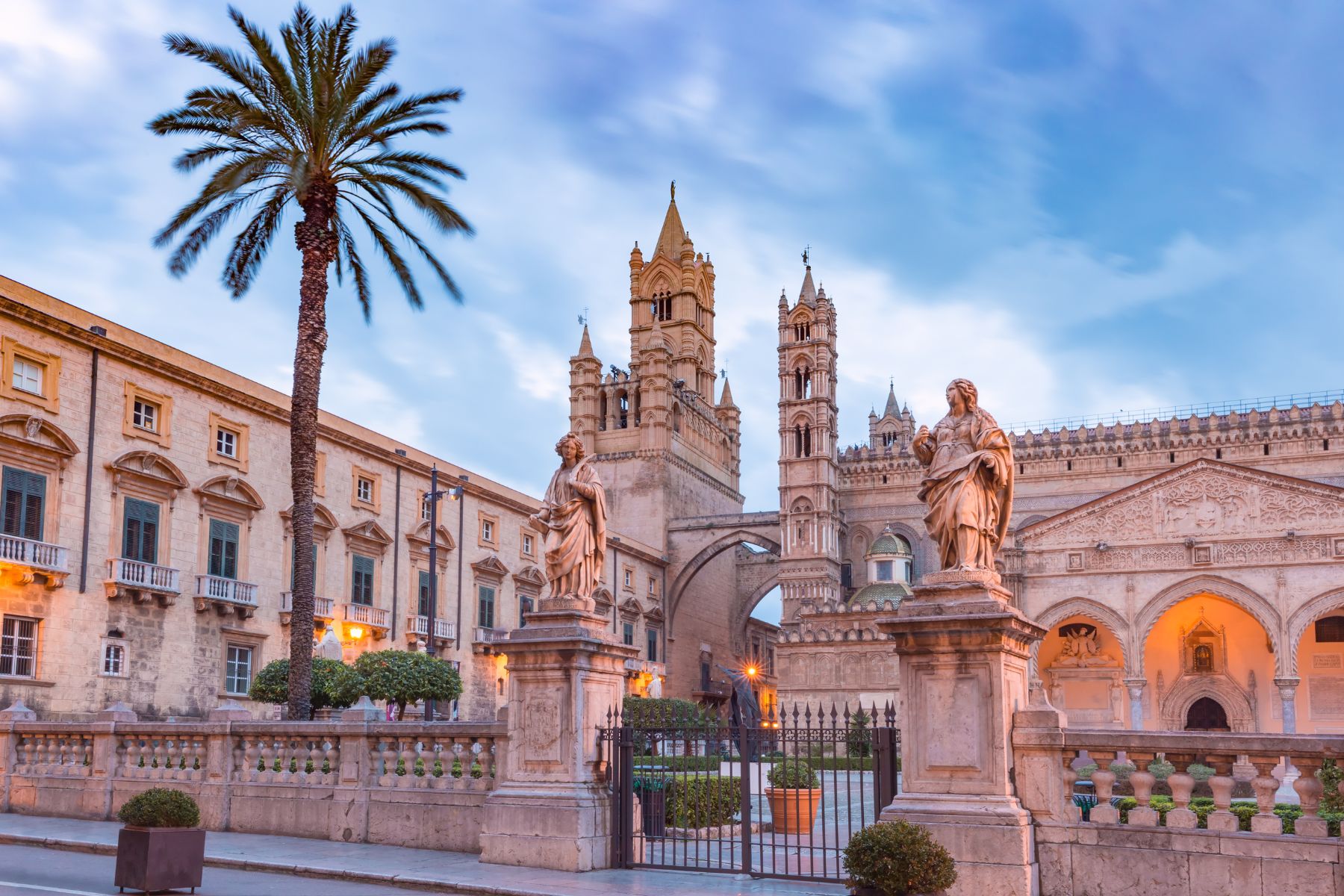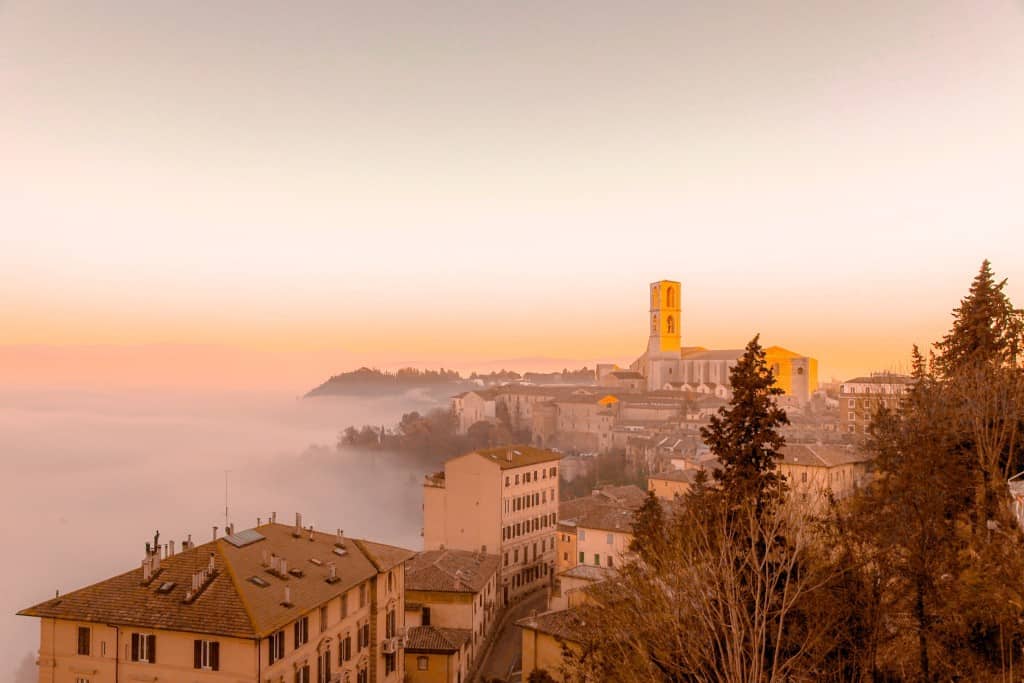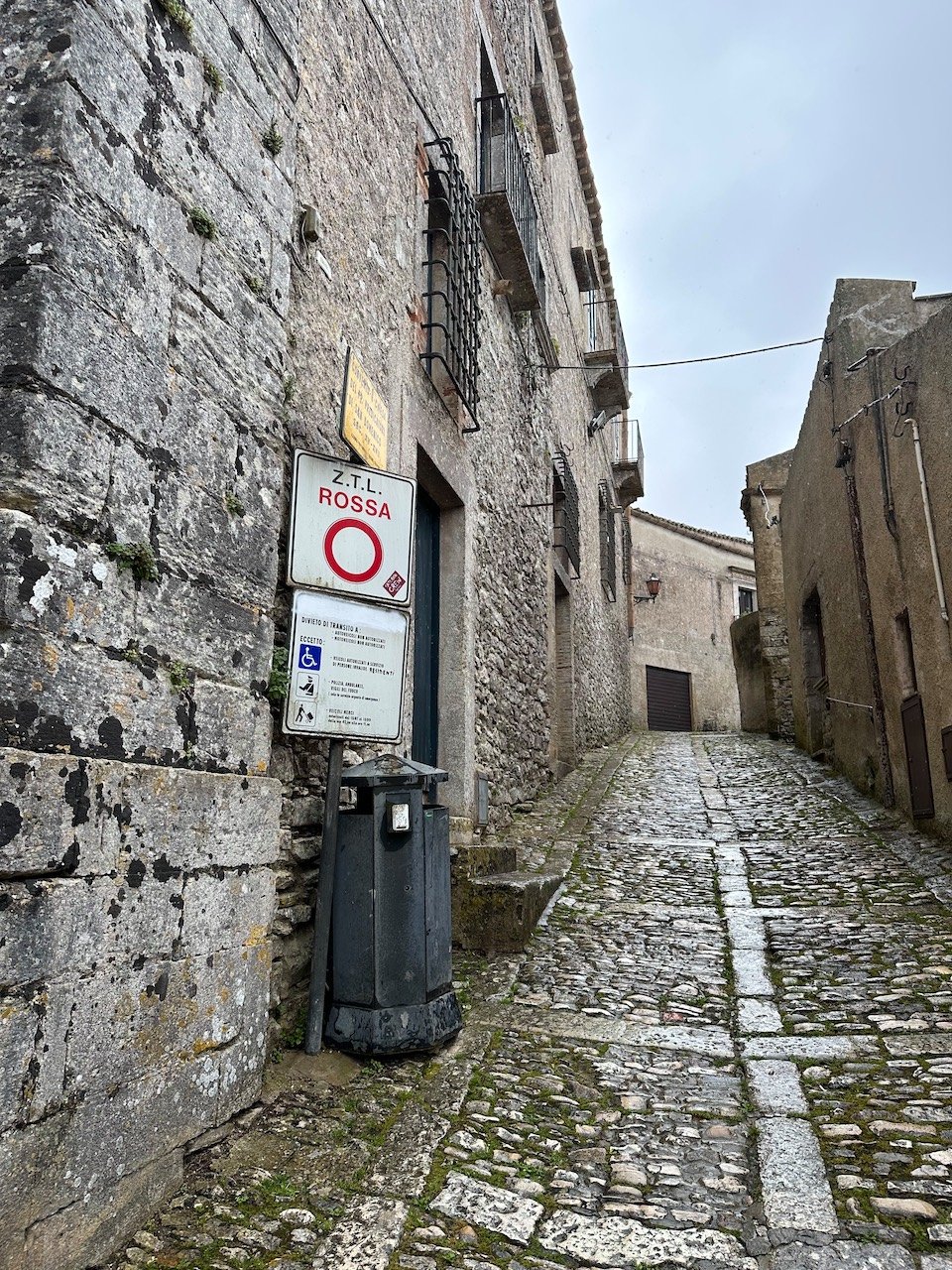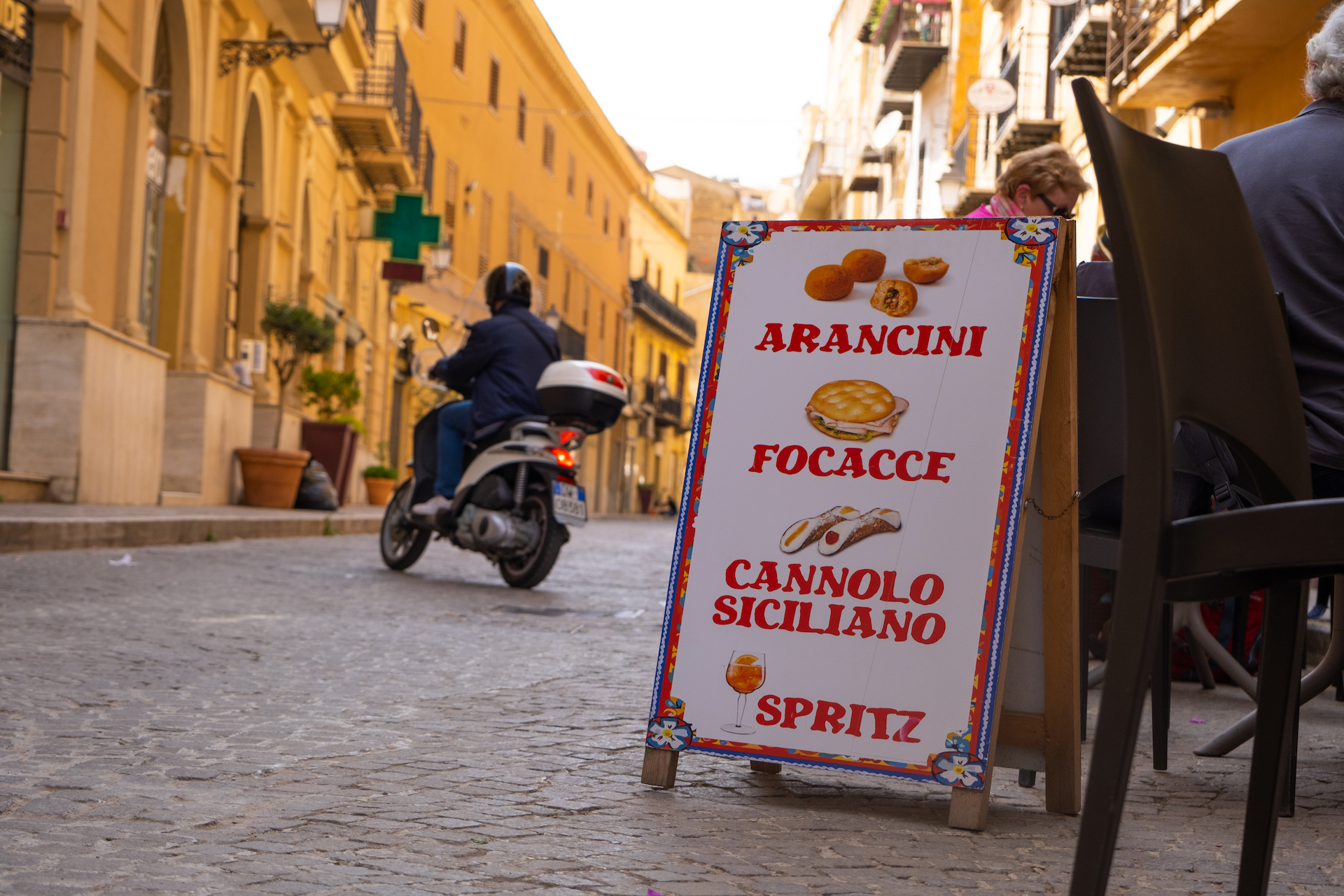18 Helpful Tips for Renting a Car in Italy

If you plan to spend some time in the boot country, renting a car in Italy is a great option. It gives you the freedom and flexibility to travel how and when you want and also allows you to visit parts of this fantastic country that are difficult to reach. On almost every trip, we rent a car and love exploring lesser-known destinations, villages, and towns.
The stunning Italian countryside and mountains make driving in Italy an enjoyable experience, as does the ability to explore many of the country’s charming small towns and villages. We’ve got some tips to share with you.
Our Top Tips
Type Of License Required

You need a standard driver’s license to rent a car in Italy. If your license is not in English or Italian, have a translation. You should be prepared to hand over your passport. You are supposed to have an International Driver’s Permit, which can be obtained in your home country. This is very easy for Americans to get at AAA for $20.
We have never been asked to provide proof of our IDP from the rental car agency, but if you get pulled over, they may ask you for it. You could get a hefty fine if you don’t have one and catch the Polizia on a bad day. If pulled over, you may be required to pay the fine on the spot, so it’s best to have cash in hand. The driving age in Italy is 18, but many car rental companies will require you to be 21. If you are under 25, you may face additional charges. It’s best to read all the fine print of your booking before you get to Italy.
You Need a Credit Card to Rent a Car in Italy

You cannot pay for your Italian rental car with cash, so use your credit card. Some rental agencies allow you to use a debit card, but it requires a hefty deposit, often well over a thousand Euros. We always recommend that everyone use a credit card for rental cars as it adds purchase protection and may include some form of rental insurance.
Expect a Hold Charge on Your Credit Card

The other reason you need a credit card is the excess charge – or hold a charge. Every one of our forty or so rental cars has put a hold on our credit card for the rental period. Holds can range anywhere from a few hundred bucks to $1000+ in some countries. The “excess charge,” as it is called, is typically stated in your reservation details, but it is easy to miss.
We know they must put this hold on our card, but it can be a huge shocker if you are unsuspecting and exceed your credit card limit. These excess charges are for scenarios where you disappear with the car and are never seen again or get in a crash and refuse to pay—stuff like that.
Car Rental Insurance in Italy

Do you need to add car insurance to your rental? Many Italian car rental companies will try to convince you to do so, and if you want to be safe and have peace of mind, it’s not a terrible idea. However, as mentioned above, if you have a US credit card or equivalent in another country, you may already have CDW (collision damage waiver) insurance for rental car coverage. It’s worth checking your documentation and calling your credit card company.
It may even be worth signing up for a new credit card that offers this so you don’t have to pay for ridiculous car rental insurance. This brings me to my next point—credit cards with primary rental insurance. Our favorite travel credit cards are the Chase Sapphire Reserve and Chase Ink Business Preferred. Both cards include primary insurance, which is a tremendous perk. We suggest you read the fine print of your credit card benefits before renting, as they often require you to decline the rental agency’s insurance.
Car rental companies in Italy love to scare customers and upsell you to their insurance packages. You need to make sure if you need it or not before falling victim to their trap. It may be worth adding to your package if you don’t have a credit card covering rental car insurance. That way, you won’t be stuck paying for a car hire out of pocket if there is an accident — roads can be incredibly narrow by North American standards.
The Cost of Renting a Car in Italy

It’s now so easy to compare rental car prices online. Most big rental car companies have rates close to one another as they monitor their competitors’ prices. But that doesn’t mean you shouldn’t do a little shopping around.
Be careful when looking online, as rental companies use tricks to make prices look lower than they are. The main way they do this is by using a ‘from’ price, with the actual amount you’ll pay only revealed when you’re further into the booking process, and they reckon you won’t bother giving up and going elsewhere.
Another trick they use is to show the price excluding tax, which means you’ll have something in the region of 20% to add to the headline price on the show. You can save on rental costs with smaller cars and manual transmissions and avoid add-ons such as an extra driver, GPS, etc. We will talk more about this later in this article.
My favorites to look at are:
- Discover Cars: What we use to search rental car prices around the globe.
- RentalCars.com: Provides comparisons for car rentals in Europe.
- AutoEurope: I can often find deals here for car rentals in Europe.
Booking a Rental Car in Italy

Nowadays, booking a rental car in Italy is easy before arriving there. We think the benefits of doing this are huge. Not only are you ‘guaranteed’ the vehicle you’ve opted for, reducing stress levels, but you’ll be charged less for renting that same vehicle simply because you’ve pre-booked. Walking up and trying to book a car is one of the worst things you can do for your wallet.
If you are unable to pre-book, don’t worry! Rental agencies rarely run out of vehicles, and if they do, you can pop next door to a competitor. However, it might mean there’s less choice—something worth bearing in mind if you have specific requirements, such as an automatic. You’ll also be charged a higher rate for the same vehicle and spend more time at the rental company’s desk rather than enjoying the start of your vacation. We suggest you book a car rental at least 24 hours before.
Where to Pick Up Your Rental Car in Italy

If you’re flying straight into Italy on a direct flight rather than crossing in from a neighboring country, it may be easiest to grab your car at the airport. Rome Leonardo da Vinci Fiumicino and Milan Malpensa have good car rental facilities, and all the main companies are represented.
This is the best place to pick up your vehicle because it saves you the time and expense of getting into the city center without your transport (and probably some heavy luggage). Even if there is an airport surcharge from the rental agency, renting from there can still be worth it. City center offices are also a good option to explore Italy on a self-drive vacation.
Opt for a Return Trip Rental
One-way rentals almost always cost more, even in the same city. To save money, you should pick up and drop off your car at the same location. However, we’ve often opted to return the vehicle to another rental location as one-way drop-off fees average around 100-150 Euros. We love this move to save on flights as we often find cheaper flights flying in and out of different airports.
Choose the Right Italian Rental Car

Size
You’ll want to opt for a smaller car when renting a car in Italy. Why’s that? Italian roads are narrow, and most cars are tiny, too. In some places, routes are even narrowed down to a single lane for both directions of traffic. In this case, you’ll find ‘passing places to pass each other. Plus, the old towns and villages around Italy can have very narrow roads that are tight even for a single car.
Style
Another thing you should consider when deciding on what rental car type to opt for is how many people and how much luggage you’ll have. Nippy two-door cars are great for getting about (and easy to park) but don’t offer much legroom in the back if those seats are used and have less space in the trunk for luggage.
It’s best to keep in mind your needs with Italian car rentals. We had a family of five in a compact car with luggage, and it was a super-tight squeeze. Always account for your luggage and group size!
Transmission Type
Finally, you’ll have the option of a manual or automatic transmission vehicle. Manuals are the most common vehicles driven in Italy and around Europe, so if you’re happy to drive one, you’ll have a more extensive choice. As a result, they also tend to be slightly lighter and cheaper to rent. However, if you’re not confident driving a manual transmission and shifting gears yourself, automatics are available, too. Just make sure you make this preference clear when booking.
Fuel Choices in Italy

When picking up your rental car in Italy, you need to know what fuel your car requires. Diesel and Unleaded are not interchangeable. Often, a sticker near the gas cap reminds you of the fuel type on rental cars. You need to return your rental car with the same amount of fuel you were given. We don’t recommend you show up with less, as the rental car agency will charge you to fill it up at an astronomical rate.
Gas stations along the Autostrade (like a highway) are usually open 24 hours a day. The gas stations along the Autostrade in Italy are especially special as they usually have espresso bars. Yes, you can enjoy a cappuccino and croissant between filling up and going to the bathroom – and this is a common thing. Gas is expensive in Italy. At the time of writing, it’s about €1.82 per liter. Both gas and diesel are sold by the liter, and gas stations are generally self-service. You can pay by credit card, debit card, or euro.
Opt For Navigation

Having a GPS for navigation means you can concentrate on driving without reading every road sign you pass. Navigation systems are also useful because they can provide alternative routes, should they be needed, and take you around traffic. The most modern versions will also indicate the road’s speed limit, saving you from a speeding ticket. That’s not to say you need to get the GPS add-on with a rental car.
If you have a cell phone with a local SIM card or international plan, you can access the data network using smartphone navigation apps such as Google Maps. Alternatively, if you don’t have a local SIM card and don’t want to spend lots of cash on international roaming, you can download a Google Map to your phone while on WiFi. If you forget to do this, the Italian Airports may have free WiFi to download a map of Italy to your phone, but make sure you have free space on your phone!
In Italy, using a cell phone while driving to make calls or send/receive SMS text messages is not permitted. You can use your smartphone for navigation purposes, but it must be hands-free only (such as safely stowed on the windscreen), and you must not program navigation while the vehicle’s engine is running. Luckily, most rental car agencies have modern fleets, including vehicles with Android Auto or Apple Carplay. The system lets you connect your phone to the vehicle’s nav screen with a USB.
Inspect Your Rental Car

Our biggest tip is to take as many photos or videos of the vehicle as possible before driving away from the lot. This will ensure that you have evidence to refute the rental car company’s claims if the car is damaged. This has saved us on more than one occasion. While we always appreciate having a rental agent show us around the vehicle and note the damage, they may miss details. If a rental agent does not show you around, thoroughly inspect yourself and note anything and everything.
Remember that if you’re unhappy with anything you see, you should insist on an alternative vehicle if you find cigarette burns, broken mirrors, or windshield cracks. These need to be noted before you leave the parking lot. Otherwise, you could be charged for the damages once you return the rental.
Before leaving the lot, it is best to get situated in the car. On the inside of the vehicle, ensure you know how to operate the headlights, indicator lights, parking brake, door locks, mirrors, and hazard lights before leaving the parking bay—a new car can be disorienting.
Distances and Speeds in Italy

Distances and speeds are measured in kilometers in Italy. The speed limit is usually signposted on each new stretch of road or change in speed. The city’s speed limit is generally 50km/hr, while main roads and motorways are 90 km-130 km. In Italy, vehicles drive on the right side of the way. Turning right at a red light is not permissible in Italy – don’t do it, or you could face a fine.
Some rural roads may be single lanes (roads tend to be narrow compared to the US). There will generally be passing places that allow cars to pull aside to allow vehicles coming in the opposite direction to pass. (Speaking of which, don’t park in passing places – only ever use dedicated parking spaces.) Speed limits are limits, not targets; only drive as fast as feels safe. Try not to worry if locals who know the roads better than you pass you to a safe place on the road.
Can You Cross Borders With Your Italian Rental Car?

If you want to venture into France, Switzerland, Slovenia, or Austria with your rental car, it’s generally okay to do so! These countries are within the Schengen Zone, so you won’t have to stop at a border crossing. Many times, you may not even know you’ve entered a new country! (We’ve done this!)
Scooters and Mopeds in Italy

It’s important to watch out for locals driving scooters and mopeds in Italy. They are everywhere, especially in the cities, and should be treated with the same respect that you treat a car. The mopeds drive a little erratically, so don’t be surprised if they suddenly pull out before you!
ZTL Zones in Italy

Large cities like Rome, Florence, and Milan have instituted ZTL Zones (Zona Traffico Limitato). These are zoned off streets to reduce traffic congestion. Cameras monitor them, and when you cross into one, a ticket is issued and sent to the address on the car’s registration. If you rent a car in Italy, the ticket will be forwarded to you. Ask and study maps to make sure you know where these zones are.
It’s also worth noting that driving and parking are for locals in smaller towns. These aren’t ZTL Zones, but you will be restricted from parking outside the town center and walking/biking in. We saw this most notably in Lucca, Perugia, and Siena.
Should You Rent a Car in Italy?

While public transport in Italy is generally great, it helps to have your car if you are two or more. Having a car and renting a car in Italy allows you to get off the traditional tourist track and see places that aren’t usually accessible. Car rentals in Italy aren’t expensive, and I think renting one is well worth the adventure!
My favorites to look at are:
- Discover Cars: Searches rental car prices around the globe.
- AutoEurope: I can often find deals here for car rentals in Europe.
What to Pack for Italy

Now that you’ve sorted out renting a car in Italy, please look at our packing list! What to wear in Italy is one of the first things to consider once you plan the basics of your first trip to the country. Packing can be simple. Generally, Italians are stylish, and we recommend dressing casually. That way, you’ll be comfortable hanging out with locals.
Plan For Your Trip
- Protect Your Trip: We don’t travel without travel insurance, nor should you. You never know what can happen while traveling, so it’s best to be prepared. HeyMondo provides excellent short-term and long-term travel insurance plans.
- Find Cheap Flights: Sign up for Going (formerly Scotts Cheap Flights) to get notified when prices get low.
- Book a Rental Car: We use Discover Car to book all our rental cars! You can also read our top tips for renting a car abroad here.
- Travel Adapter: Make sure you find a good adapter to keep your personal electronics charged. Otherwise, you may be paying for a cheap one once you land. Purchase one here.
- Travel Backpack: We like the Nomatic Travel Backpack for our travels. Check the price here.
- Our Favorite Travel Shoes: Our answer to this question is always Allbirds! Check them out on their site!
- Get a Travel Credit Card: We travel worldwide for free because we have leveraged our spending into points. See how you can do the same with our favorite travel credit cards.


Good to always read tis on every destination before you travel, i did not know about the ZTL Zones In Italy.
Thanks to you, i would have fallen for them as i am planning a self drive tour in Italy in id 2024. Thanks!!